The organizer of chromatin topology RIF1 ensures cellular resilience to DNA replication stress
- PMID: 36746532
- PMCID: PMC9906048
- DOI: 10.26508/lsa.202101186
The organizer of chromatin topology RIF1 ensures cellular resilience to DNA replication stress
Abstract
Eukaryotic genomes are duplicated from thousands of replication origins that fire sequentially forming a defined spatiotemporal pattern of replication clusters. The temporal order of DNA replication is determined by chromatin architecture and, more specifically, by chromatin contacts that are stabilized by RIF1. Here, we show that RIF1 localizes near newly synthesized DNA. In cells exposed to the DNA replication inhibitor aphidicolin, suppression of RIF1 markedly decreased the efficacy of isolation of proteins on nascent DNA, suggesting that the isolation of proteins on nascent DNA procedure is biased by chromatin topology. RIF1 was required to limit the accumulation of DNA lesions induced by aphidicolin treatment and promoted the recruitment of cohesins in the vicinity of nascent DNA. Collectively, the data suggest that the stabilization of chromatin topology by RIF1 limits replication-associated genomic instability.
© 2023 Lebdy et al.
Conflict of interest statement
The authors declare that they have no conflict of interest.
Figures
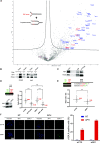
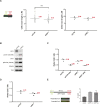
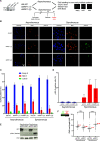





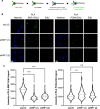
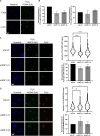


Similar articles
-
Human RIF1-Protein Phosphatase 1 Prevents Degradation and Breakage of Nascent DNA on Replication Stalling.Cell Rep. 2019 May 28;27(9):2558-2566.e4. doi: 10.1016/j.celrep.2019.05.002. Cell Rep. 2019. PMID: 31141682 Free PMC article.
-
RIF1 Links Replication Timing with Fork Reactivation and DNA Double-Strand Break Repair.Int J Mol Sci. 2021 Oct 23;22(21):11440. doi: 10.3390/ijms222111440. Int J Mol Sci. 2021. PMID: 34768871 Free PMC article. Review.
-
Replication timing regulation of eukaryotic replicons: Rif1 as a global regulator of replication timing.Trends Genet. 2013 Aug;29(8):449-60. doi: 10.1016/j.tig.2013.05.001. Epub 2013 Jun 25. Trends Genet. 2013. PMID: 23809990 Review.
-
G-quadruplex binding protein Rif1, a key regulator of replication timing.J Biochem. 2021 Feb 6;169(1):1-14. doi: 10.1093/jb/mvaa128. J Biochem. 2021. PMID: 33169133 Review.
-
ChECing out Rif1 action in freely cycling cells.Curr Genet. 2019 Apr;65(2):429-434. doi: 10.1007/s00294-018-0902-0. Epub 2018 Nov 19. Curr Genet. 2019. PMID: 30456647 Review.
Cited by
-
Checkpoint phosphorylation sites on budding yeast Rif1 protect nascent DNA from degradation by Sgs1-Dna2.PLoS Genet. 2023 Nov 13;19(11):e1011044. doi: 10.1371/journal.pgen.1011044. eCollection 2023 Nov. PLoS Genet. 2023. PMID: 37956214 Free PMC article.
-
The nucleolar protein GNL3 prevents resection of stalled replication forks.EMBO Rep. 2023 Dec 6;24(12):e57585. doi: 10.15252/embr.202357585. Epub 2023 Nov 15. EMBO Rep. 2023. PMID: 37965896 Free PMC article.
-
DNA replication and replication stress response in the context of nuclear architecture.Chromosoma. 2024 Jan;133(1):57-75. doi: 10.1007/s00412-023-00813-7. Epub 2023 Dec 6. Chromosoma. 2024. PMID: 38055079 Free PMC article. Review.
-
Liquid condensates: a new barrier to loop extrusion?Cell Mol Life Sci. 2025 Feb 20;82(1):80. doi: 10.1007/s00018-024-05559-8. Cell Mol Life Sci. 2025. PMID: 39976773 Free PMC article. Review.
References
-
- Alabert C, Bukowski-Wills JC, Lee SB, Kustatscher G, Nakamura K, de Lima Alves F, Menard P, Mejlvang J, Rappsilber J, Groth A (2014) Nascent chromatin capture proteomics determines chromatin dynamics during DNA replication and identifies unknown fork components. Nat Cell Biol 16: 281–291. 10.1038/ncb2918 - DOI - PMC - PubMed
-
- Balasubramanian S, Andreani M, Andrade JG, Saha T, Sundaravinayagam D, Garzon J, Zhang W, Popp O, Hiraga SI, Rahjouei A, et al. (2022) Protection of nascent DNA at stalled replication forks is mediated by phosphorylation of RIF1 intrinsically disordered region. Elife 11: e75047. 10.7554/elife.75047 - DOI - PMC - PubMed
Publication types
MeSH terms
Substances
LinkOut - more resources
Full Text Sources
Miscellaneous
